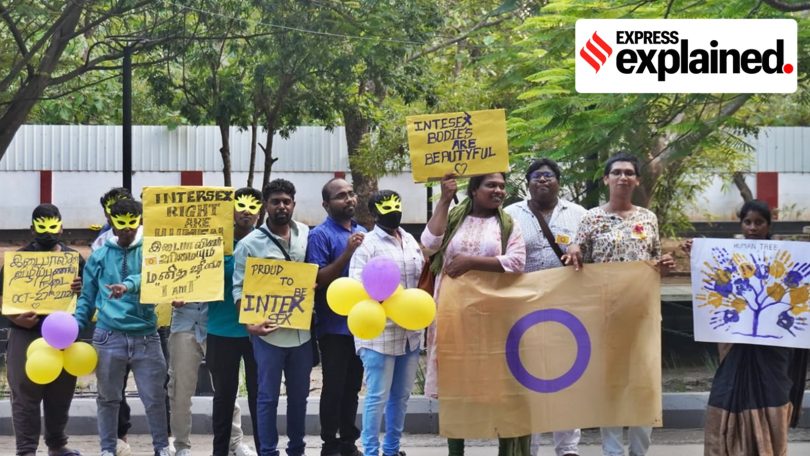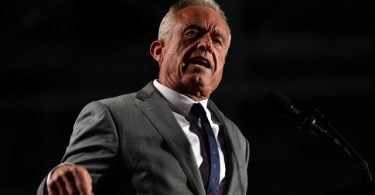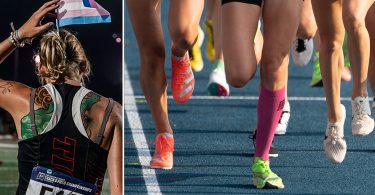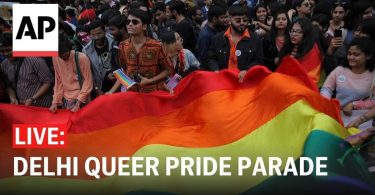Despite the strides made by the larger LGBTQ community over the decades in terms of recognition, there is little awareness about intersex people, a constituent group of the larger queer community.
Intersex Awareness Day is thus observed annually on October 26 and many organisations celebrate the community and work to build general awareness around it through the week.
First, who are intersex people?
An intersex person is someone born with “sex characteristics” such as reproductive organs, hormonal patterns or sexual anatomy that “do not fit typical binary notions of male or female bodies,” according to the Office of the United Nations High Commissioner for Human Rights.
The differences vary: for some, genitalia do not “match” their reproductive organs, others may have an “enlarged” clitoris or a “micropenis” and vagina, while others’ sex chromosomes are neither the “female” XX nor “male” XY.
The term “intersex” does not necessarily refer to gender identity, and certainly not to sexual orientation (who one is attracted towards). This differentiates an intersex person from a transgender person — the former has to do with physical attributes, the latter with intense feelings of discomfort (“gender dysphoria”) with their sex characteristics. However, one can be intersex as well as transgender.
What challenges do intersex people face in India?
Indian intersex people have long faced challenges in terms of how law, language and gender operate in society, with institutions largely taking a binary view on issues of sex and gender.
For instance, many intersex people are forced to have surgeries at a young age, with their parents hoping to “correct” their genitals, causing scarring, trauma and sterilisation. They have also demanded recognition under the law and dealt with the denial of insurance policies, as only Male/Female/Transgender checkboxes are available on Aadhaar card applications.
Advertisement
Why is October 26 celebrated as Intersex Awareness Day?
On the day in 1996, security guards pushed activists Morgan Holmes and Max Beck out of the American Academy of Pediatrics’ annual conference. They were trying to deliver a speech on “challenging (the Academy’s) still-prevailing opinion that cosmetic surgery to “fix” intersexed genitals was the best course of action,” but were met with “hostility”, Holmes later wrote. They were representing the now-defunct Intersex Society of North America (ISNA).
Soon, people gathered outside the venue in Boston, Massachusetts, including allies from other organisations. They carried signs saying “Hermaphrodites with Attitude”. This was the first major public demonstration of intersex people in North America, 28 years ago.
Explained | Why is Pride Month celebrated in June?
Unlike the Stonewall riots — wherein police raided a popular New York inn for queer people and they fought back, resulting in an immediate watershed moment for queer rights activism — it would take until 2003 for the protest anniversary to be christened Intersex Awareness Day.
Before the event, conversations on intersex experiences were mostly limited to internet forums, like The Portland Intersex Initiative (TPXI) and Bodies Like Ours. Emi Koyona, who worked at ISNA and was running TPXI, and Betsy Driver, co-founder of Bodies Like Ours, decided that an “awareness day” would attract more media attention, besides celebrating the movement itself.
Advertisement
How intersex people have been perceived in India
While there are mentions of “sexless individuals”, “hijra” or “third gender” in Indian scriptures, dating back to at least the 17th century, these are not entirely representative of intersex people — mainly because “hijra” is considered an umbrella term for transgender, gender non-conforming and intersex people.
Each of these groups faces unique hurdles, though the term “third gender” is “unfortunately used for everyone,” says Mohammed, one of the co-founders of India’s only intersex solidarity collectives, Intersex Human Rights India (IHRI).
Many also believe that intersex people are “naturally born hijras” But an intersex person may identify as a man, a woman, or neither and they do not all identify with hijra communities. Smita Shah argues in her book The Legal Status of Intersex Persons that “this ability to transcend and traverse sexual orientations and gender identities has rendered intersex persons almost invisible and uniquely vulnerable, as if unnecessary of recognition and protection in the law.”
There is very little research, visibility or interest to understand this even within LGBTQ+ organisations, according to Mohammad. Intersex people criticised this conflation of nomenclature when the Supreme Court of India first mentioned them. The historic NALSA vs Union of India judgment of 2014 held that “transgender” or “third gender” people were entitled to fundamental rights.
Advertisement
While this was monumental, the court included “hijras and eunuchs” under the umbrella of transgender rights, which activists criticised, for the judgement left out explicit mentions of intersex peoples’ struggles. The PIL for the case also did not mention them.
However, in 2019, the Madras High Court in Arunkumar and Anr. vs The Inspector General of Registration and Ors banned sex (re)assignment surgeries on intersex babies and children in Tamil Nadu. As a result, after policy consultations, the state government passed an order against such surgeries without the patient’s informed consent as an adult.
In the same year, the word “intersex” was included under the Transgender Persons (Protection of Rights) Act, 2019. While a “person with intersex variations” is defined, there are no “specific protections, prohibitions and entitlements that reflect an intersex person’s experience,” said a study by the Centre for Law and Policy Research and the Solidarity Foundation.
What has been the legal journey for intersex people in India?
On April 8 this year, the Supreme Court issued notice on a PIL for the need for “central legislation” on the fact that intersex children face “sex-change surgeries.”
Advertisement
The plea, filed by intersex activist Gopi Krishna M, stated that such surgeries are done with “the consent of parents” and a “lack of uniform policy” is leading to such practices. It also asked for integrating the “intersex option” in identity cards and education institutions/workplaces, and that intersex people be included in the Census, among other measures.
The plea also claimed that a hospital in Tamil Nadu’s Madurai performed 40 unregulated surgeries on intersex children and children with “ambiguous genitalia,” which, if true, is in direct violation of the Tamil Nadu government’s 2019 order.
The Kerala High Court had issued a similar notice to the state government in 2023, ordering that it “issue regulations for intersex surgeries” after the parents of a child born with a congenital disorder filed a writ petition, and issued tentative regulations. Notably, Kerala was the first state to allow the “intersex” option in birth and death certificates in 2011.
How intersex activists have played a role
Activists and organisations have played a key role in the larger movement. The Tamil Nadu government passed the 2019 order to ban genital-related operations on intersex children after a policy briefing jointly organised by Srishti Madurai, India’s first organisation to lead the country’s “genderqueer and intersex movement”, and Intersex Asia, Asia’s first forum for intersex activists and people.
Advertisement
Srishti Madurai was founded in 2011. Their efforts began with a 24/7 helpline for genderqueer people in three South Indian languages. Their representatives were also invited in 2015 to “witness the passage” of the Transgender Persons (Protection of Rights) presented by DMK MP Tiruchi Siva in the Rajya Sabha.
They “requested” MPs of both Houses to “present issues pertaining to intersex rights.” Next year, they officially launched a campaign to sensitise stakeholders and different religious leaders about intersex human rights, culminating in a petition to the National Human Rights Commission of India.
Although there are challenges in raising public awareness, such as targeted social media trolling and internal differences within the queer community, groups such as the IHRI are working toward reaching bigger milestones. While many feel the movement is still nascent, it is definitely alive.







